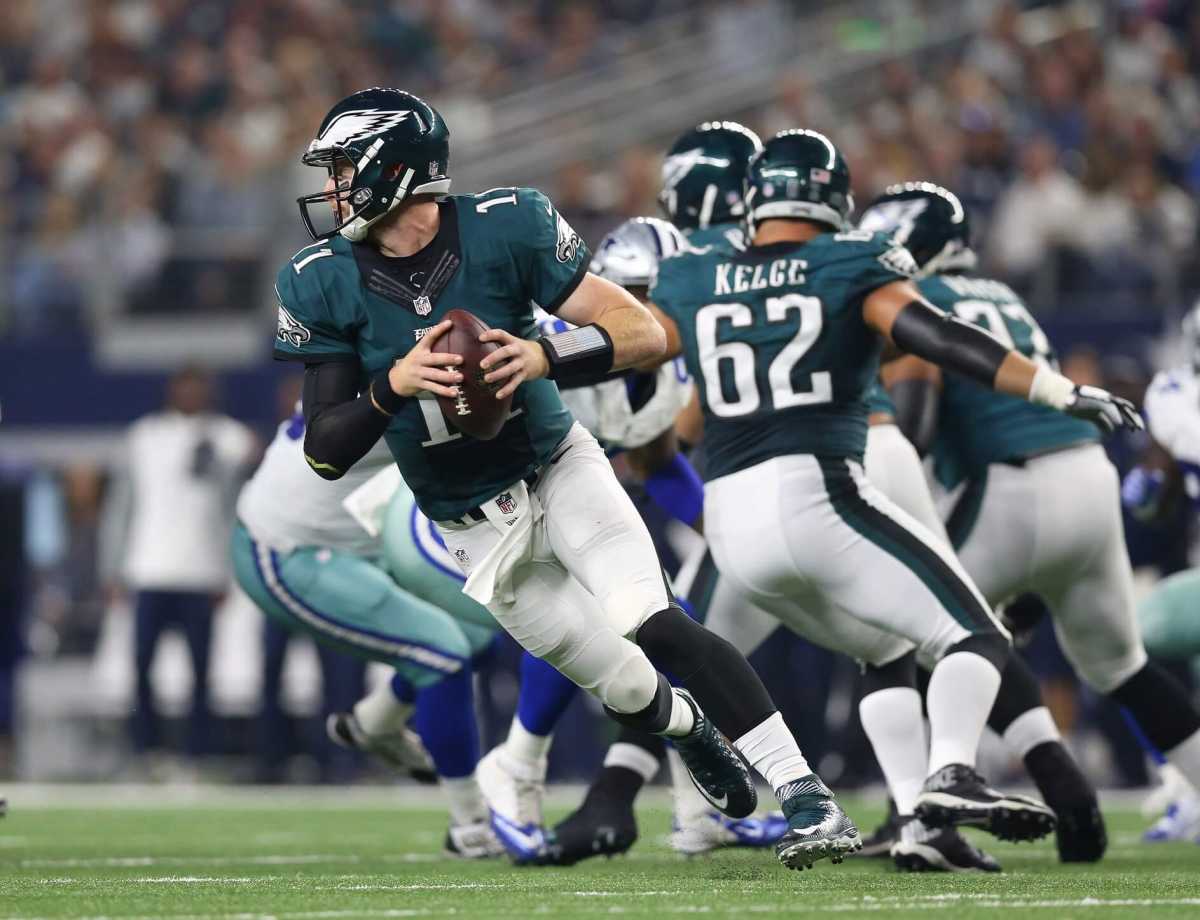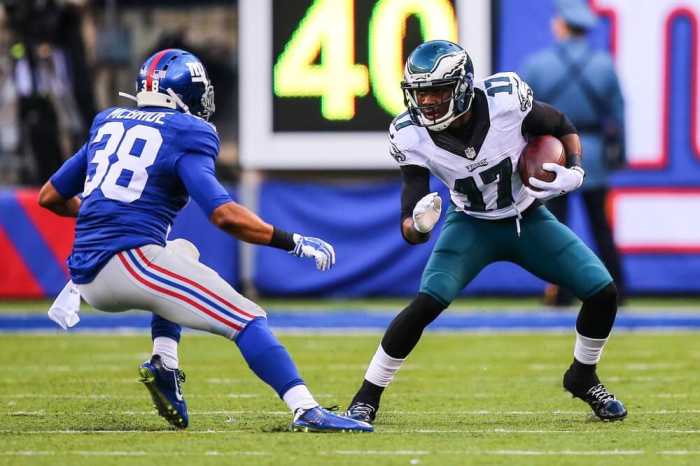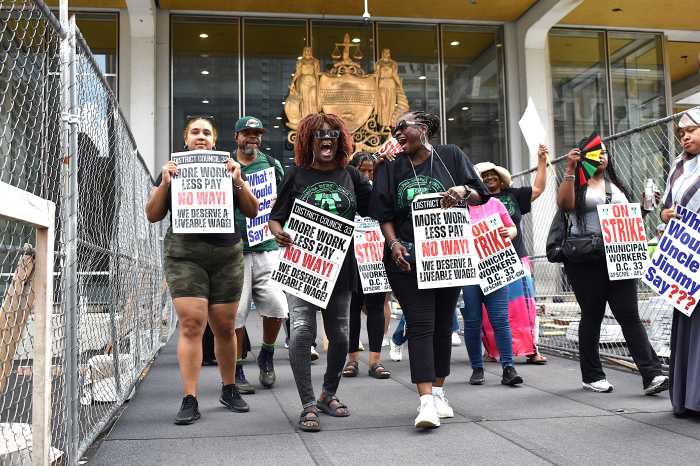The Eagles may be 4-3 coming into this weekend’s clash with the Giants, but their Offense has been less than impressive in recent weeks. The birds may still be putting up over 25 points on average per game and staying incredibly competitive deep into the fourth quarter..but there’s one flaw that has continued to anchor the unit and sees them ranked 29th in total yards.
It all stems from a simple decision. Prior to Lane Johnson’s suspension, Carson Wentz set the league on fire. Not turning the ball over until the game against Detroit, Wentz led the Eagles to a stunning 3-1 record, throwing for 7 touchdowns and 1,007 yards. More notably however, he was averaging a sufficient amount of yardage per pass attempt:
vs CLE: 7.51
vs CHI: 5.59
vs PIT: 9.71
vs DET: 7.21
Upon the news of Johnson’s suspension, the Eagles announced that rookie Halapoulivaati Vaitai would take the reins for the duration of Johnson’s absence. Against Washington, the Eagles attacked with the same gameplan they did against Detroit. The main difference was, Wentz fell victim to MUCH more pressure.
Vaitai allowed 2.5 sacks on his NFL debut..but the troubles didn’t end there. Wentz suffered 12 total hits and 5 sacks during the loss to their divisional rivals..and the Offense has not been the same ever since.
The Offensive Line has actually gotten much better. Vaitai has found his feet in the NFL and the penalties that have plagued the unit are slowly phasing out. The consistency is improving and errors decreasing, but after Wentz was rattled early against the Redskins, the motive became simple. Get the ball out quicker so that Wentz isn’t isn’t going to be subjected to hit after hit.
In the games since the loss to Washington, Wentz has averaged 4.93 and 4.70 yards per game..a HUGE decrease. The decision to get the ball out quicker relies on three things. A quarterback who can deliver accurately, rapidly and consistently..a steady backfield and playmakers who can create something out of nothing. All of which are absent in the Eagles Offense as a consequence of each other, a chain reaction.
The quarterback:
There is no doubting the accuracy of Carson Wentz. Completing 150 of 228 total passes, the rookie has been simply sensational. The problem is that the Eagles appear to be turning him into something he isn’t, an Alex Smith clone.
Wentz is a rookie. A simple statement that is often lost on many. Originally drafted to sit behind an experienced Sam Bradford, Wentz often showed tendencies to throw wobblers and high passes throughout the offseason. While he may have the mental attributes, athleticism and ceiling of a franchise quarterback..it’s still going to be a developmental process each and every week.
The problem with running a gameplan in which the ball is leaving the quarterback’s hands so quickly is that his release has to be immaculate and the mechanics fluid two of the very few weaker aspects of Wentz’s game. In fact, even players of the Cleveland Browns said that Wentz’s slower release would be something they looked to exploit in week one. Ultimately, the failed miserably, but the weakness was clear even then.
Now, as we approach week nine. We’re seeing more and more passes where Wentz is throwing a little high for his receivers, throwing inside where it should be outside and narrowly avoiding interceptions and sometimes overthrowing them altogether. This isn’t a fault on Wentz..this was to be expected. But to run an Offense that thrives on short “dink and dunk” passes, it puts a lot of pressure on the quarterback to zone in on his first read and make the throw, which also explains why we’re seeing Zach Ertz among others often wide open and un-targeted.
Carson Wentz is a phenomenal athlete, an incredibly accurate passer and mature beyond his years. The Offense has become so focused on protecting him and getting the ball out quickly, that instead of allowing him to flourish and express these qualities, they’re being anchored down in place of strengthening flaws.
Receivers:
In week one of the regular season, Jordan Matthews caught seven passes for 114 yards and a touchdown. Against the Cowboys, he caught four MORE passes for just 65 yards and a touchdown. A startling difference.
The problem with “small-balling/ dinking and dunking/ whatever you want to call it”, is that it relies on the receivers and playmakers capitalizing on opportunities. Jordan Matthews and Nelson Agholor for instance, are very precise route runners..contrasting this style of Offense.
Matthews is such a threat due to being so dominant physically yet playing in the slot. This allows him to create easy mismatches and get open down the field much easier than many who play the position. Limiting him to slants, out routes and intermediate routes is again putting a cap on how much of an impact he can have.
Six of Matthews’ eleven receptions against the Cowboys were caught inside the “yard lines”. As the season has gone on, his routes out of the slot have become progressively marginalized..which means if the coverage is tight, the play becomes very reliant on ball placement..which as we’ve already established, is an issue.
Then, there’s the separation aspect. The Eagles have some great route runners on their roster. Matthews as aforementioned and Nelson Agholor being two of them..while a mismatch nightmare in Dorial Green-Beckham should bring its own set of challenges for a Defense.
The problem is that receivers are very rarely going to find separation on a comeback route, a curl or something that can be covered very easily in zone coverage. Zach Ertz for instance very rarely breaks a tackle after a reception because the route has either finished, been picked up by a defender or has been extinguished by the Defense.
The Eagles receivers often find themselves running into blockades, being forced into tight coverage or just being shutdown over the middle. Just like we saw under Chip Kelly last year, once teams begin to figure out how to stop a leak..they won’t just put some tape over it, they’ll ensure that leak never breaks through again.
With Wentz constantly having to force the ball into tight coverage, it’s great to see he has the ability and consistency to do that..but it’s not making life easier for anyone. The Offense ran much more fluidly when receivers could challenge corners in man-coverage and make a deep play. That aspect is now gone..and the receivers are very limited as a result.
Running backs:
If the Eagles are going to insist on running the same type of Offense for the foreseeable future, the running backs have to do better. So far, they’ve been less than impressive. As noted in an article earlier this week, there’s no real clarity at the position. Poor decisions, late fumbles and a very bizarre use of the word “committee” has seen the backfield score in goal-line situations, but lack the regular production in order to move the sticks..which without going into too much detail (as all that can be found here), brings us on to the final point.
The largest domino:
In terms of third down conversion, the Eagles have been nothing short of woeful. Converting on just 34.8% of third downs this season and ranking 29th in the league, the birds have found real difficulty in sustaining drives..and that’s where it all adds up.
This style of Offense is to built to run the tempo of the game, dictate the pace and control the clock..things that just aren’t attainable if you can’t sustain drives. If you can’t convert on third down, you’ll rarely sustain drives..and to sustain drives, you need to achieve more than ten yards in four plays. That sounds simple, but with the Eagles averaging less than 5 per passing attempt and their running game dwindling, it’s easy to see why everything is stagnating.
The Eagles simply HAVE to take shots down the field and open the playbook up for Carson Wentz. The Offensive Line is now steady enough to protect him against an underwhelming Giants pass rush and by putting a cap on the unit, everybody suffers..not just the quarterback, not just the receivers, everybody.



























